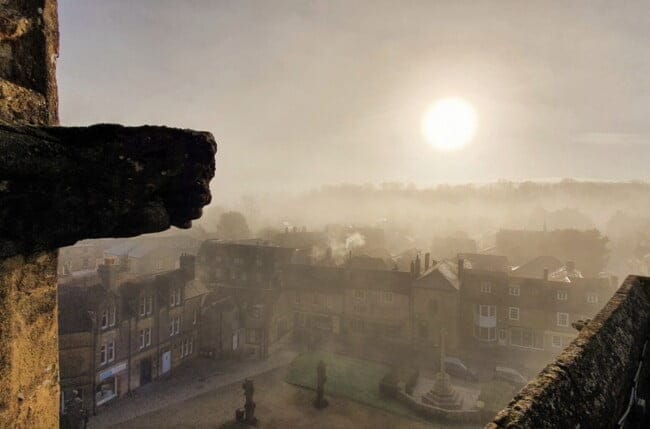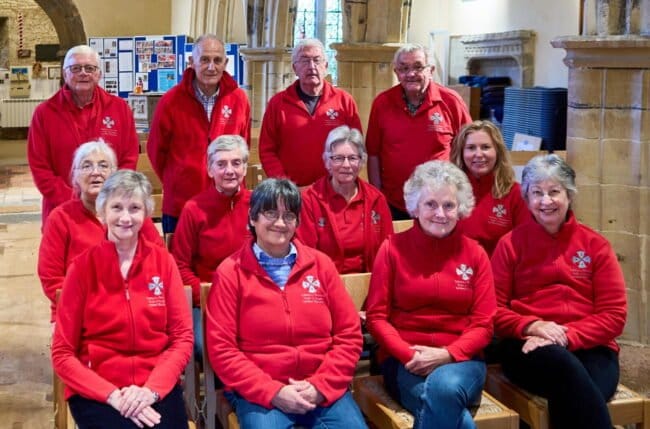In the edition of the 14th May 1887 of the weekly Bell News, which flourished between 1881 and 1915, was recorded a peal rung at St Mary’s Bridport by members of the recently formed Salisbury Diocesan Guild. A footnote asserts that it is the first peal to be rung in Dorset.
 Its conductor, Ferris Shepherd, was one of the principals and instructors of the Guild of Devonshire Ringers which had been formed in 1874 and was materially involved in the establishment of the Salisbury Guild. All the other ringers were leading lights in our own Guild and were based in Salisbury. All the band were heavily involved in the propagation of what was often called scientific ringing (method ringing to us) in these latter decades of the nineteenth century.
Its conductor, Ferris Shepherd, was one of the principals and instructors of the Guild of Devonshire Ringers which had been formed in 1874 and was materially involved in the establishment of the Salisbury Guild. All the other ringers were leading lights in our own Guild and were based in Salisbury. All the band were heavily involved in the propagation of what was often called scientific ringing (method ringing to us) in these latter decades of the nineteenth century.
It is worth taking a moment to consider how such an occasion could be brought about: correspondence would have been by handwritten letter conveyed in the mail where firstly permission could be gained and specific arrangements made to convene at a particular time. They would almost certainly have travelled by train and may perhaps have needed to stay overnight in the town.
It seems that it may have been a close call as to whether the peal attempt went ahead as it was also noted that the hanging of the bells was only completed half an hour before the ringing was due to begin! However, the work was evidently satisfactory as they were able to complete their peal.
Great pride was taken in the achievement of this peal as evidenced by the ornate and colourful entry in the Guild’s Peal Book which was handwritten by James Jerram himself (see below).
But was this the first peal in Dorset?
It is certainly the first peal by members of the Guild, but on a small painted tablet hanging on the wall of the ground floor ringing chamber in Piddlehinton church there is a record of a peal rung on Christmas Day 1820, more than 60 years before the foundation of the Guild.
 The village lies in the Piddle valley to the north of Dorchester in the agricultural heartlands of Dorset and all the members of this peal band were either tenant farmers or agricultural workers. Three of the men were members of the same family of the name of Nelson being either three brothers or a father and his two sons – the census shows that the father and his eldest son were both called Timothy so we can not be sure if the Timothy Nelson named is the father or the son.
The village lies in the Piddle valley to the north of Dorchester in the agricultural heartlands of Dorset and all the members of this peal band were either tenant farmers or agricultural workers. Three of the men were members of the same family of the name of Nelson being either three brothers or a father and his two sons – the census shows that the father and his eldest son were both called Timothy so we can not be sure if the Timothy Nelson named is the father or the son.
In those days “peal” generally meant something far less precise than the meaning it had acquired by the end of the nineteenth century and it seems unlikely that our Piddlehinton peal conformed to the accepted rules that are applied today for a performance to qualify as a peal.
However, the tablet tells us that their performance lasted 4 hours and 2 minutes which is definitely long enough for a full peal on five bells.
There are no other records of any change ringing in the county at this period outside of this tablet so it doesn’t seem likely that there was an isolated method ringing band here – much more likely is that they would have rung call changes which we know had been practiced in the south-west for many years before the advent of scientific method ringing and the establishment of the Guild.
We should perhaps note that ringing for four hours does demonstrate a real commitment to the art, as does the fact that Robert Biles farmed at Rawlesbury and would have had to travel the 8 miles to ring at Piddlehinton. They were also proud of their achievement, evidenced by the production of the commemorative plaque. This paints a different picture of the dedication of the ringers to their tower than that which is often portrayed by later “improvers” who so often dismiss local ringers as unskilled idle drunkards!
Even if the peal at Piddlehinton might not qualify under the stricter definition of today, it is no mean feat to have continuous ringing for four hours and I’ll leave it up to you, the reader, to decide how you’d like to define “peal” in the context of history, and therefore who to credit with ringing the first peal in Dorset.
Andy Waring
The page from the Guild’s Peal Book, handwritten by James Jerram himself.
[All photos AW]








